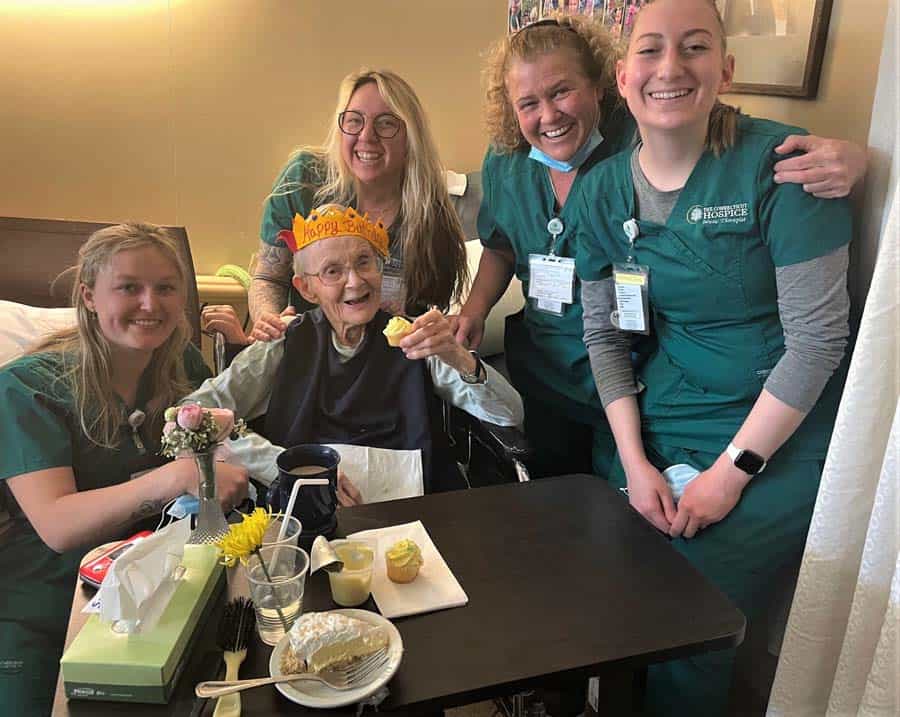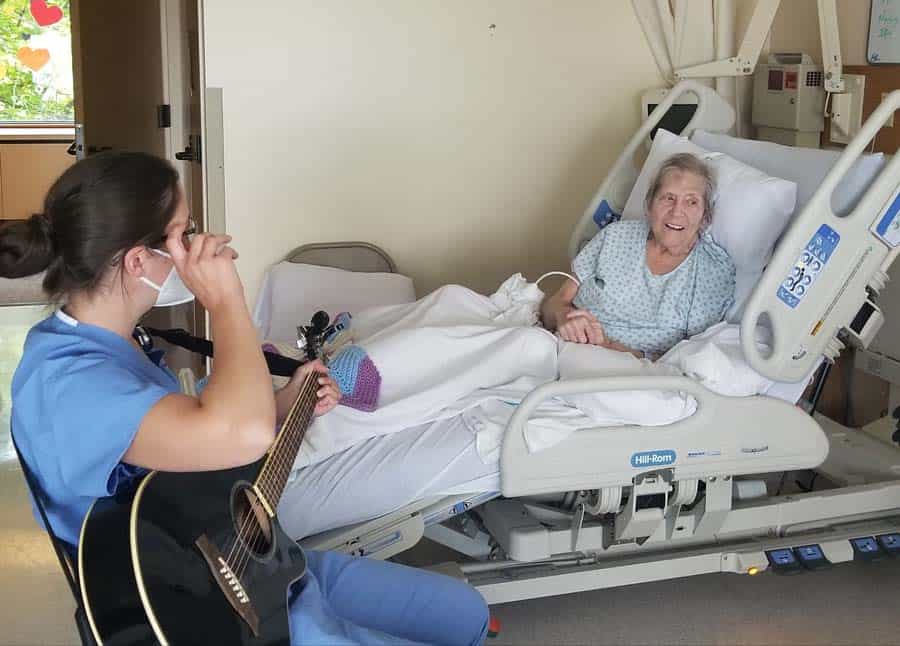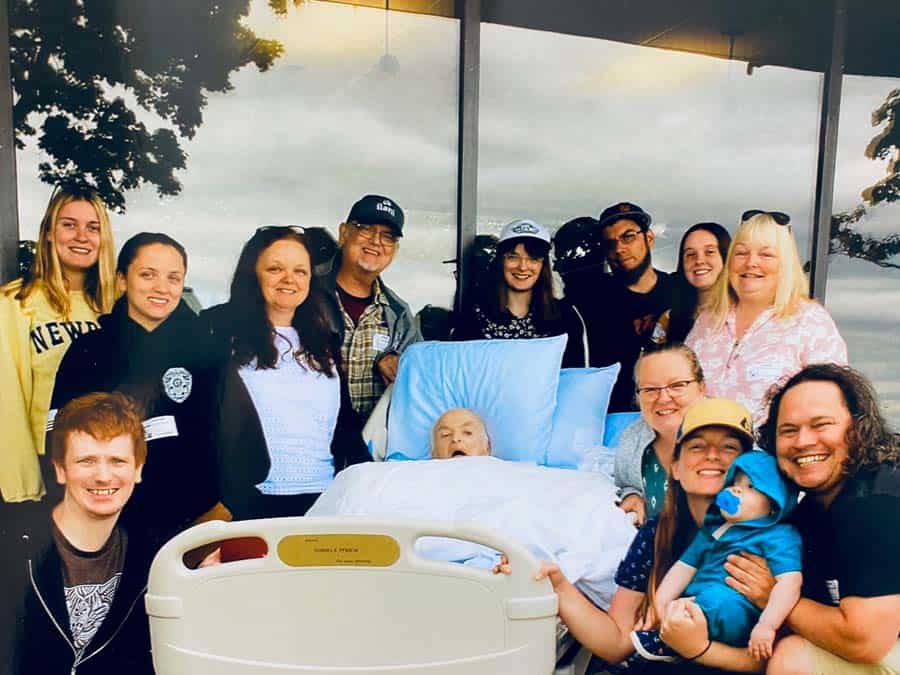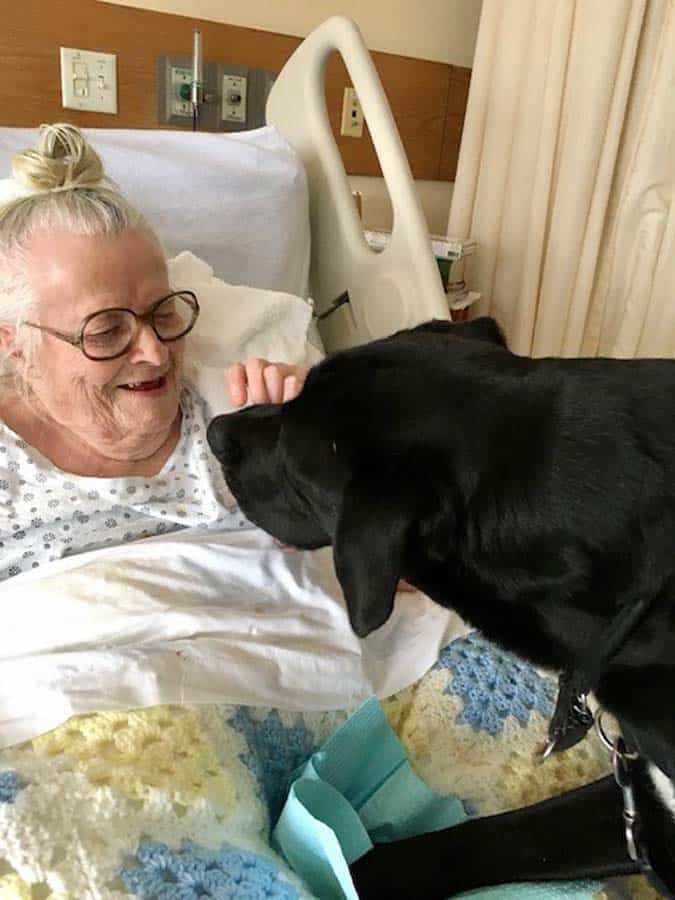Please view our updated COVID-19 guidelines and visiting procedures →.

Pearl gates, golden paths, and an eternity of love encompass peace beyond understanding that is associated with “Heaven.” However, a select number of people are granted the opportunity to wake up along the deep blue ocean while being surrounded by a sea of caring green scrubs. Suddenly, these residents amend their current thoughts by adding The Connecticut Hospice to their definition of “Heaven.”
After interning here for a summer, I experienced countless patients considering the Connecticut Hospice an oasis, while many of them explicitly referred to it as “Heaven.” The peace that the patients feel is contagious, and the relief on the family's faces can be seen as a patient is newly admitted into the hospice.
There is much irony in this depiction of hospice as a heavenly location. Hospice is supposed to be the final destination for a patient, and the positive emotions that are seen on the inside of these walls highlight the character of hospice care and the current problems in our pre-hospice healthcare system. As hospice is a place that one would assume is filled with anxiety and grief, it might be perplexing for one to hear that it is filled with love, peace, and relief.
While my experience has drawn my attention to the areas that need to be amended in terms of hospice accessibility, my experience has also drawn my attention to one distinguished aspect: Hospice is the kindest form of medicine.
A hospice patient has access to social work services, art services, and spiritual care, while their family members have access to bereavement services. Hospice care works with a patient on a holistic level to offer the patient the best experience possible. While I knew the textbook definition of the generous services provided by hospice before interning here; I did not understand its true meaning until I witnessed it.

Consider the power of music in Billy’s room for an instant. Billy was a patient with dementia who had a difficult time holding up his head and could not remember his past experiences. Billy’s room was a somber atmosphere as his family was devastated to see him in such a state. All they had left to do was hold and comfort him. One day, I heard sounds of laughter and joy coming from one of the patients’ rooms. As I approached, I could hear Billy start to hum a familiar tune and gradually lift his head to look his family members in the eye. The cheeks of those around him began to glisten, but being distinctly different than before, these were tears of happiness. Feeling a smile invade my lips, Billy’s room showed me the generosity of hospice care.

In addition, consider John. While unconscious, he had countless family and friends at his bedside telling stories of his life, including generations of family gatherings at their pool. One afternoon, I visited his bedside with the director of social work, who asked the family if he would like to see a priest. The family was content with this offer and knew that this was what John would want. A few hours later, as I was getting ready to leave work, a nurse confronted me and told me that right after the priest came and anointed John, he passed. This depiction made it undeniable that this event gave John the peace he longed for. This type of story is not unique, as countless patients wait for their families to visit and for spiritual comfort before they let go. Hospice has the privilege of facilitating these generous and comforting experiences of peace for these patients.

Lastly, consider Mary. Mary was one of the sweetest patients I have met, and she was diagnosed with a severely contagious disease. For this reason, she was not allowed to see her dog to mitigate the spread of her disease. The hospice nurses constantly watched her condition in hopes of letting her dog, Rover come in to visit. After a few days of Mary asking to see her dog, the medical staff deemed her clear to see Rover. The smile that overtook Mary’s face, along with the laughter that escaped when the staff told her she could see Rover was comparable to that of one reunited with a best friend. On the first day of the visit, Rover curled up on the bed with Mary as Mary brushed her hair. After Rover visited a few times, Mary’s spirits lifted, and her demeanor changed as she had a joke readily available every time I visited her. The bond that the two held was undoubtedly special, as her dog made her complete. Rover’s visit then became so routine that the doctors had it in their calendar so they may say hi. Rover became part of the hospice family.

A trend that I noticed is that when one is living the last few days of life, they crave to see their pets. The relief one feels while in hospice allows them to visit with their pets and do other activities that they might not be able to do in other forms of medical treatment, such as visit their horse, spend time with their dog, graduate from college, and spend quality time with their family members free of pain. Again, while I entered the hospice on my first day at work, I knew that special circumstances can be applied to hospice care, but I was not touched by these compassionate experiences until I witnessed them firsthand.
Growing close to patients like Mary, Billy, and John and witnessing their experiences is a special dynamic that I cherished while working here over the summer. These relationships were unique as patients would offer end-of-life wisdom that others only have an opportunity to receive once in their life from a grandparent. How fortunate was I to receive this type of advice daily?
However, the reality about these relationships is that they have an early expiration date. This aspect of the patient interaction helped me to cherish every moment that I was granted with a patient. Presenting itself as an emotionally taxing and rewarding experience, I realized that the hospice staff constantly encounters these emotions throughout their career. I soon learned the attributes that one must have to show undevoted care to each patient at a hospice, and I gained a newfound appreciation for the hospice staff.
I have learned that the staff that decides to go into hospice care have distinct reasons to enter this medical field. Many of the staff remark on living through a loved one’s passing and how a hospice made the passing a beautiful sight rather than a tragic event. However, regardless of one’s reason to go into the hospice field, it requires someone with strength, perseverance, courage, kindness, compassion, intelligence, and grace to care for someone during their passing and continue after witnessing a patient's passing.
As I write this blog, I come under the impression that you may have preconceived notions about what hospice care is, but I hope that you are touched by these experiences as if you had witnessed them yourself. I hope that you understand how hospice care stands apart from all other types of medicine in its holistic approach, its generosity, and its staff. As hospice care is invaluable, general in-patient care is also not easily attainable. In-patient care is expensive due to the skilled nursing, medications, room and board, and other services offered. Medicare will cover in-patient care stay costs; however, it can only be applied under specific circumstances. These circumstances are strict, and they leave many patients without the opportunity to experience hospice care. In addition, those who are homeless and only eligible for routine hospice care have no safe place to receive this care. Therefore, while I have been given the opportunity to understand the kindness of hospice care, I also take up a burden of desire to see in-patient hospice care become more accessible for all populations, and I hope that you take up this burden as well.
Compassion, generosity, and caring staff embody the kindness that hospice has to offer to those willing to accept. These are the aspects that I would want someone to understand and see when apprehensive about hospice care being right for them or when someone is first entering into hospice care. I would also like to highlight these aspects to those who are in a position to change the current governmental dynamics that surround hospice accessibility.
As I pass through the pearly gates surrounding The Connecticut Hospice and embark on my journey back into reality on my last day of work, I am wistful. I am filled with a sense of peace. I am grateful to have experienced such a beautiful form of medicine and a caring climate. I am content that the patients whom I have grown to care for and the ones to come in hereafter are in the hands of the kindest form of medicine.

As a not-for-profit, we depend on generous donors to help us provide customized services and therapies that aren’t completely covered by Medicaid, Medicare, or private insurance.
Please make a gift to help us sustain the highest standard of care.
Admissions may be scheduled seven days a week.
Call our Centralized Intake Department: (203) 315-7540.